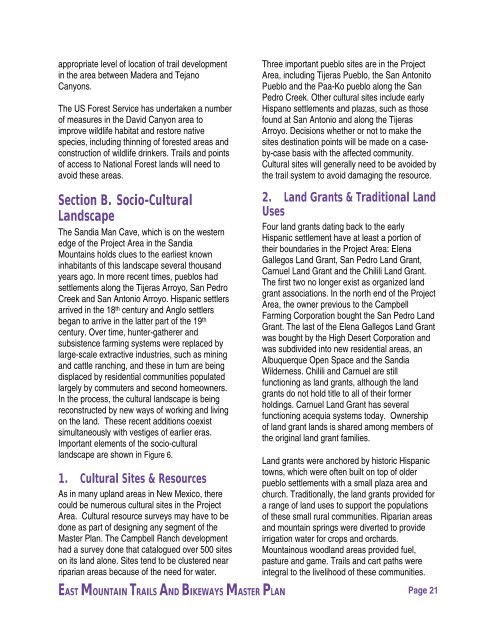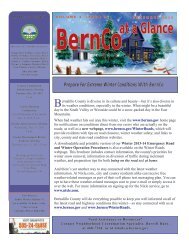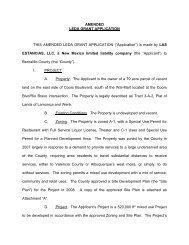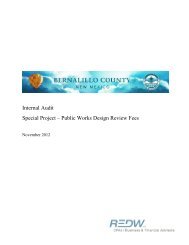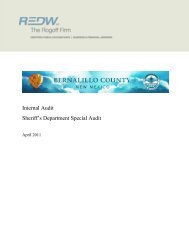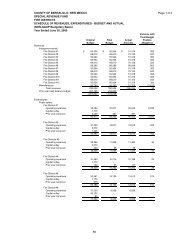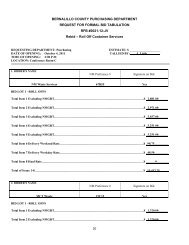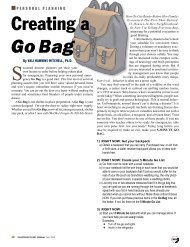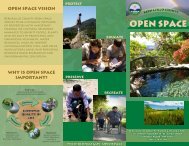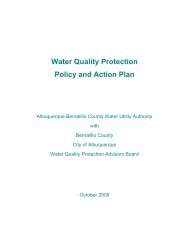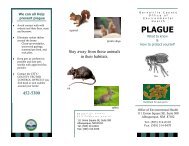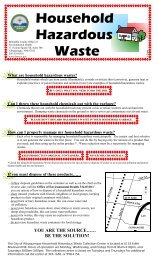East Mountain Trails & Bikeways Master Plan - Bernalillo County
East Mountain Trails & Bikeways Master Plan - Bernalillo County
East Mountain Trails & Bikeways Master Plan - Bernalillo County
Create successful ePaper yourself
Turn your PDF publications into a flip-book with our unique Google optimized e-Paper software.
appropriate level of location of trail development<br />
in the area between Madera and Tejano<br />
Canyons.<br />
The US Forest Service has undertaken a number<br />
of measures in the David Canyon area to<br />
improve wildlife habitat and restore native<br />
species, including thinning of forested areas and<br />
construction of wildlife drinkers. <strong>Trails</strong> and points<br />
of access to National Forest lands will need to<br />
avoid these areas.<br />
Three important pueblo sites are in the Project<br />
Area, including Tijeras Pueblo, the San Antonito<br />
Pueblo and the Paa-Ko pueblo along the San<br />
Pedro Creek. Other cultural sites include early<br />
Hispano settlements and plazas, such as those<br />
found at San Antonio and along the Tijeras<br />
Arroyo. Decisions whether or not to make the<br />
sites destination points will be made on a caseby-case<br />
basis with the affected community.<br />
Cultural sites will generally need to be avoided by<br />
the trail system to avoid damaging the resource.<br />
Section B. Socio-Cultural<br />
Landscape<br />
The Sandia Man Cave, which is on the western<br />
edge of the Project Area in the Sandia<br />
<strong>Mountain</strong>s holds clues to the earliest known<br />
inhabitants of this landscape several thousand<br />
years ago. In more recent times, pueblos had<br />
settlements along the Tijeras Arroyo, San Pedro<br />
Creek and San Antonio Arroyo. Hispanic settlers<br />
arrived in the 18 th century and Anglo settlers<br />
began to arrive in the latter part of the 19 th<br />
century. Over time, hunter-gatherer and<br />
subsistence farming systems were replaced by<br />
large-scale extractive industries, such as mining<br />
and cattle ranching, and these in turn are being<br />
displaced by residential communities populated<br />
largely by commuters and second homeowners.<br />
In the process, the cultural landscape is being<br />
reconstructed by new ways of working and living<br />
on the land. These recent additions coexist<br />
simultaneously with vestiges of earlier eras.<br />
Important elements of the socio-cultural<br />
landscape are shown in Figure 6.<br />
1. Cultural Sites & Resources<br />
As in many upland areas in New Mexico, there<br />
could be numerous cultural sites in the Project<br />
Area. Cultural resource surveys may have to be<br />
done as part of designing any segment of the<br />
<strong>Master</strong> <strong>Plan</strong>. The Campbell Ranch development<br />
had a survey done that catalogued over 500 sites<br />
on its land alone. Sites tend to be clustered near<br />
riparian areas because of the need for water.<br />
2. Land Grants & Traditional Land<br />
Uses<br />
Four land grants dating back to the early<br />
Hispanic settlement have at least a portion of<br />
their boundaries in the Project Area: Elena<br />
Gallegos Land Grant, San Pedro Land Grant,<br />
Carnuel Land Grant and the Chilili Land Grant.<br />
The first two no longer exist as organized land<br />
grant associations. In the north end of the Project<br />
Area, the owner previous to the Campbell<br />
Farming Corporation bought the San Pedro Land<br />
Grant. The last of the Elena Gallegos Land Grant<br />
was bought by the High Desert Corporation and<br />
was subdivided into new residential areas, an<br />
Albuquerque Open Space and the Sandia<br />
Wilderness. Chilili and Carnuel are still<br />
functioning as land grants, although the land<br />
grants do not hold title to all of their former<br />
holdings. Carnuel Land Grant has several<br />
functioning acequia systems today. Ownership<br />
of land grant lands is shared among members of<br />
the original land grant families.<br />
Land grants were anchored by historic Hispanic<br />
towns, which were often built on top of older<br />
pueblo settlements with a small plaza area and<br />
church. Traditionally, the land grants provided for<br />
a range of land uses to support the populations<br />
of these small rural communities. Riparian areas<br />
and mountain springs were diverted to provide<br />
irrigation water for crops and orchards.<br />
<strong>Mountain</strong>ous woodland areas provided fuel,<br />
pasture and game. <strong>Trails</strong> and cart paths were<br />
integral to the livelihood of these communities.<br />
EAST MOUNTAIN TRAILS AND BIKEWAYS MASTER PLAN Page 21


